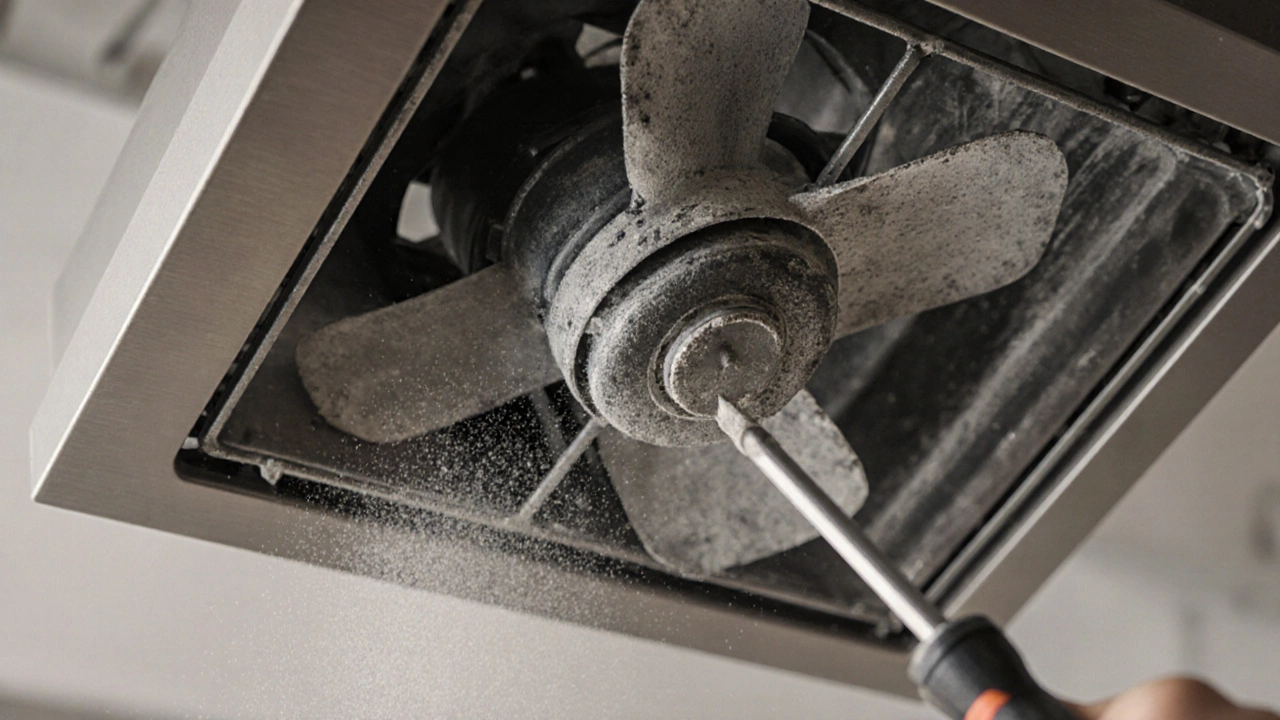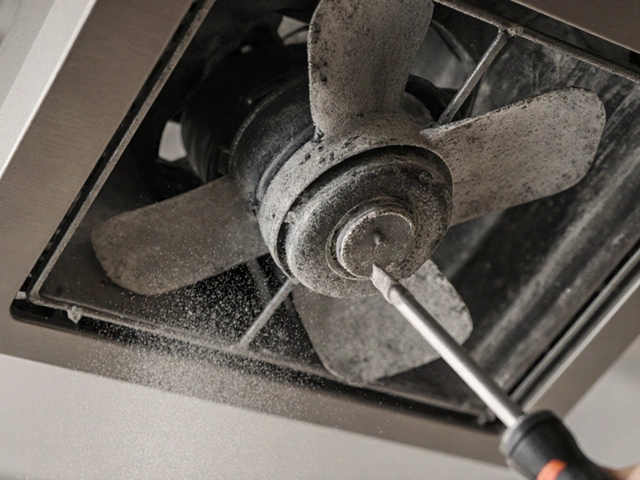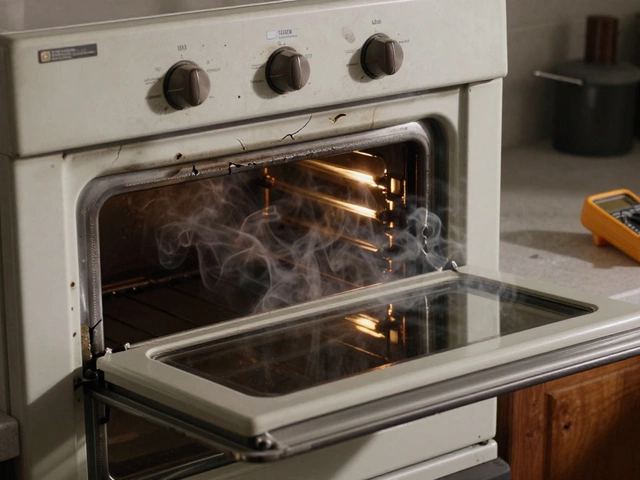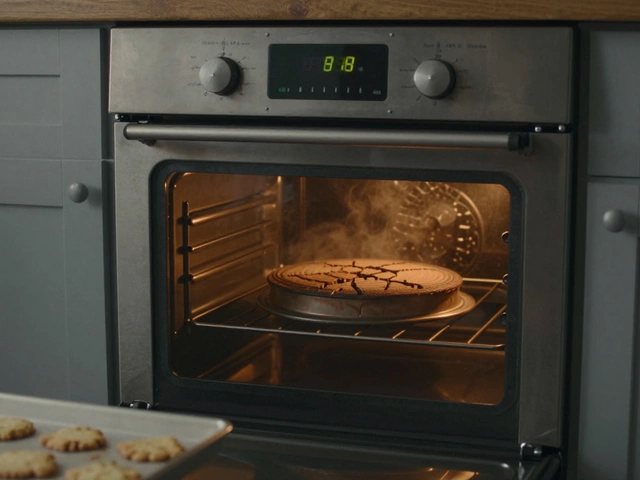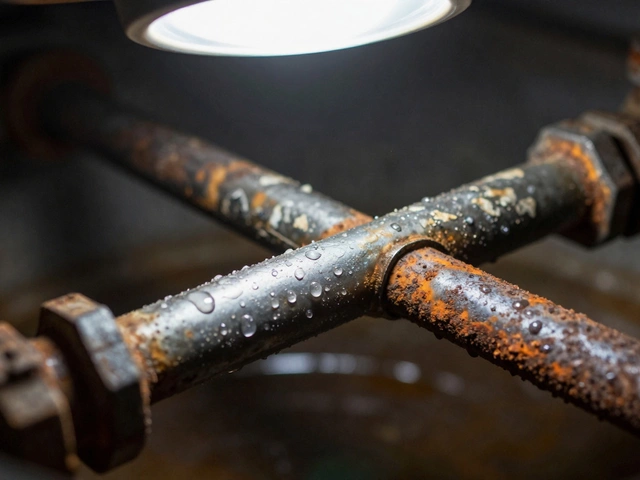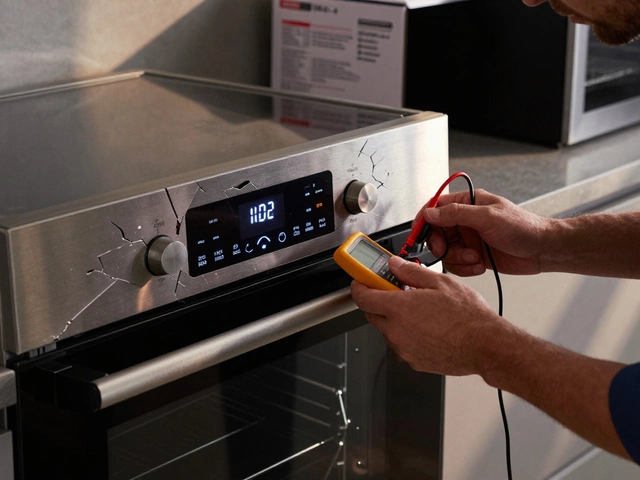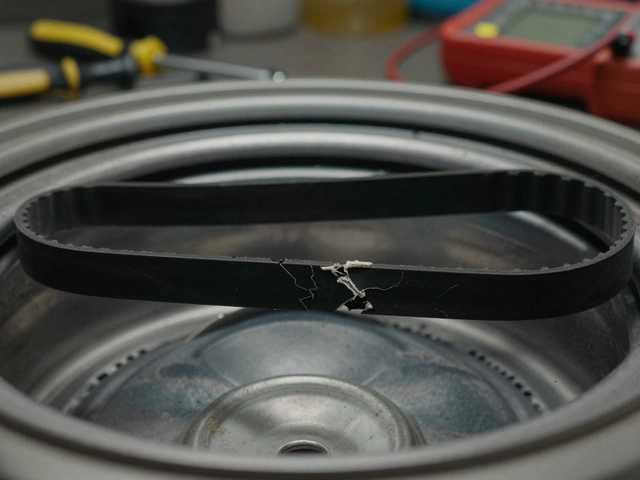Extractor Fan Maintenance Calculator
How Often Should You Clean Your Fan?
Select your cooking frequency to get personalized maintenance recommendations.
Your Maintenance Recommendations
Optimal Cleaning Frequency
Based on your cooking habits
Performance Impact
When the fan in your kitchen or bathroom starts making a whining noise or seems to lose suction, the motor is probably buried under dust, grease, and carbon. Extractor fan motor is a small electric component that drives the fan blades and pulls air through the ductwork. Keeping it clean restores airflow, reduces energy use, and prevents costly breakdowns. You don’t need a professional for a routine clean‑up - just a few tools, a little patience, and the safety checklist below.
Why a Clean Motor Matters
A motor that’s coated in grime runs hotter, which shortens its lifespan and can trigger the built‑in thermal cut‑out. In addition, accumulated residue blocks the fan’s ability to move air, so you’ll notice longer cooking times, lingering steam, and a rise in humidity. Regular cleaning keeps the motor running at its rated efficiency and eliminates those annoying noises.
Safety First: Power Off and Prepare
Before you touch anything, switch off the circuit breaker that supplies the fan. If the fan is hard‑wired, lock the breaker in the off position with a tag. For plug‑in models, simply pull the plug. Let the unit sit for at least five minutes to let the capacitor discharge.
Wear insulated safety glovesto protect your hands from sharp edges and hot components. Keep a fire‑proof mat underneath in case any residue flakes off.
Tools You’ll Need
- Phillips screwdriverfor removing the fan’s outer cover and motor mounting screws
- flat‑head screwdriverto pry loose stubborn clips without cracking the housing
- soft brushsuch as a paintbrush or dedicated motor cleaning brush
- vacuum cleanerwith a narrow nozzle attachment for sucking out loose dust
- cleaning clothlint‑free, dampened with mild detergent
- isopropyl alcoholfor wiping non‑electrical metal parts
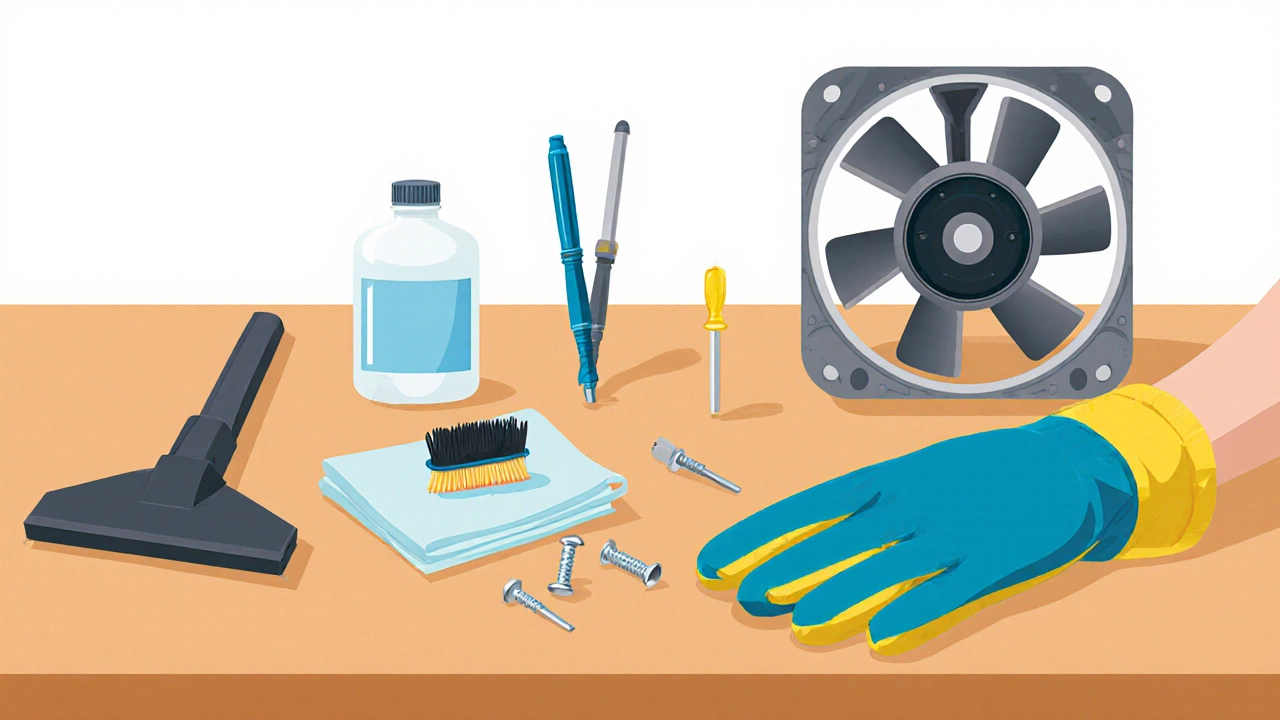
Accessing the Motor
- Locate the fan’s outer housing - usually a metal or plastic grille at the bottom of the vent. Use the Phillips screwdriver to remove the screws holding it in place.
- Gently pull the grille away. You should see the fan blades attached to a central hub and the motor behind them.
- If the motor is secured with additional brackets, note the screw locations before removing them. Take a photo for reference during re‑assembly.
Cleaning the Motor
The motor itself is a sealed unit, but the windings and bearings can collect fine dust. Follow these steps:
- Use the vacuum cleaner’s narrow nozzle to suction loose dust from the motor’s exterior and the surrounding duct. Move slowly to avoid pulling on wiring.
- Take the soft brush and sweep away any stubborn grime on the fan blades and the motor housing. If you notice thick grease, dip the brush lightly in the mild detergent solution, then wipe clean.
- For the motor shaft and bearings, apply a small amount of isopropyl alcohol to a clean cloth and rub gently. This removes oil residue without leaving moisture.
- Do NOT spray any liquid directly onto the motor - excess moisture can cause short circuits.
- After all visible debris is gone, give the entire assembly another quick pass with the vacuum to pick up any dislodged particles.
Re‑assemble and Test
- Replace any brackets you removed, using the screw locations you documented earlier. Tighten screws just enough to hold the motor firmly without warping the housing.
- Snap the grille back into place and re‑insert the mounting screws.
- Turn the circuit breaker back on (or plug the fan in) and listen. The whine should be gone, and you should feel stronger airflow when the fan runs.
- If the fan still sounds weak, double‑check that the fan blades spin freely and that no debris is trapped underneath.
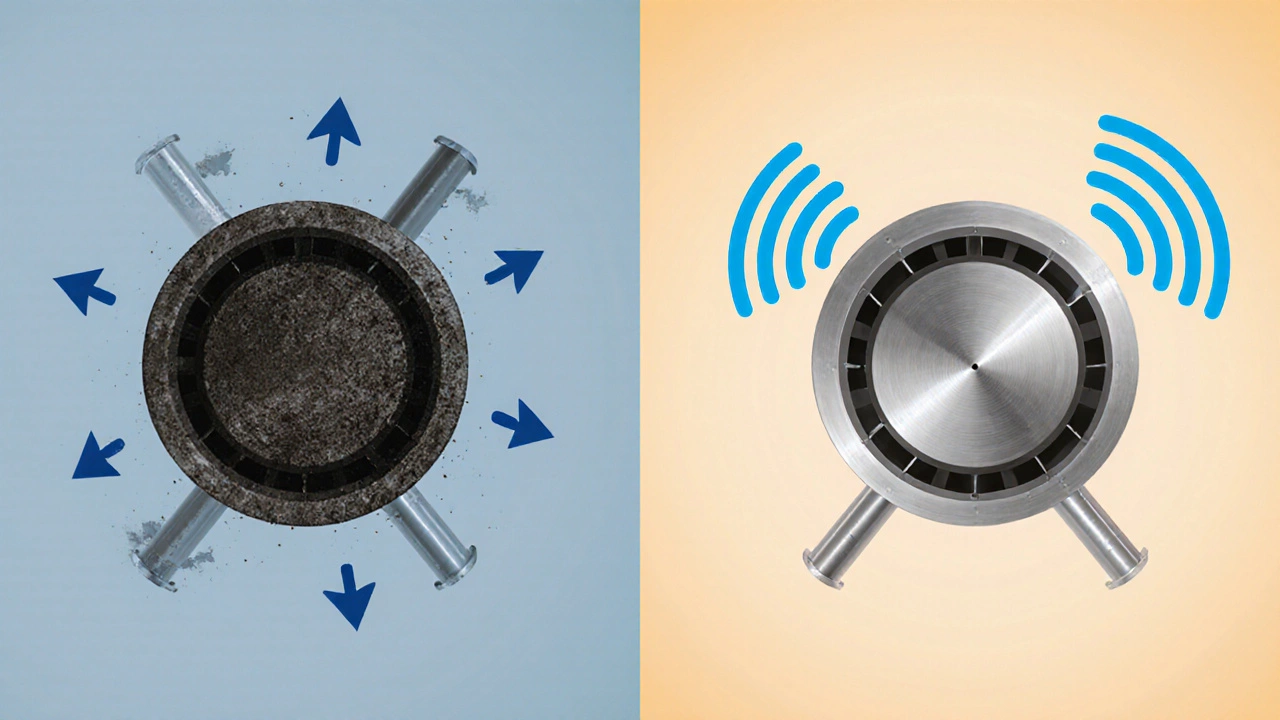
Maintenance Schedule & Tips
Regular upkeep prevents the motor from getting into a deep‑clean state. Here’s a quick reference you can stick on your fridge:
| Cleaning Interval | Airflow Retention | Motor Temperature Rise | Typical Noise Level |
|---|---|---|---|
| Every 3 months | 95% of original | +5°C | Quiet |
| Every 6 months | 80% of original | +10°C | Low hum |
| Annually | 60% of original | +15°C | Noticeable whine |
In a typical New Zealand kitchen, cooking 5-6 nights a week creates a lot of grease. If you notice a drop in suction before the three‑month mark, add an extra clean‑up.
Common Problems After Cleaning
- Fan still noisy: Check that the wiring harness wasn’t pinched and that the motor bearings are properly lubricated. A thin layer of non‑conductive grease can be applied if the motor manual allows it.
- Reduced airflow: Make sure the duct isn’t clogged further downstream. A simple vacuum of the exterior vent can clear that up.
- Motor won’t start: Verify the power is reaching the unit with a multimeter. If the motor still refuses, the cleaning may have exposed an internal fault that needs professional replacement.
Next Steps if You’re Unsure
Even with a careful clean, some fans have sealed motors that are best serviced by a qualified technician. If you encounter any burnt smells, spark marks, or the fan repeatedly trips the breaker, stop using it and call a licensed electrician or an extractor‑fan specialist.
Frequently Asked Questions
How often should I clean my extractor fan motor?
For most home kitchens, a thorough clean every three months keeps airflow above 90% of original performance. Heavy‑grease environments may need a six‑week interval.
Can I use a pressure washer on the motor housing?
No. Direct water pressure can force moisture into the motor windings and cause short‑circuits. Stick to vacuuming and a damp cloth.
Do I need to lubricate the motor after cleaning?
Only if the manufacturer’s service manual recommends it. Most modern sealed motors are factory‑lubricated and don’t require additional grease.
What should I do if the fan still smells burnt after cleaning?
Turn the unit off immediately and disconnect power. A burnt odor usually means the motor windings are damaged and need professional replacement.
Is it safe to clean the motor while the house power is on?
Never. Even low‑voltage fans can deliver a shock if you touch the live terminals. Always shut off the breaker or unplug the unit first.

